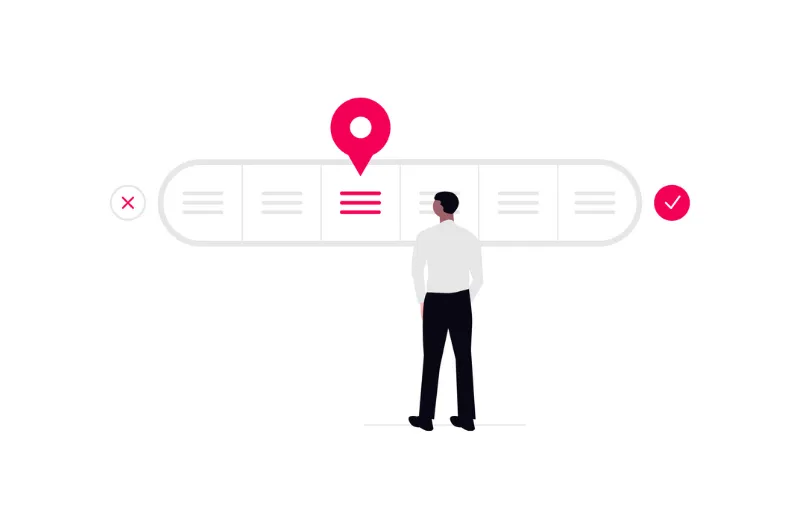Avoid duplication in your B2B technology stack

Un tech stack is the set of digital tools that a company uses to manage its activity. It includes systems such as CMS, the PIM or DAM, among others.
Each new system solves a specific problem, but over time, the boundaries between applications blur and inconsistencies emerge.
The problem appears when functions start to overlap between systems.
In this article we tell you:
- What are functional overlaps and why they slow down daily operations.
- How to recognize them before they cause costly errors.
- Five Practical Principles to keep your Stack tidy and coherent.

What is a functional overlap
We speak of overlap when two or more systems assume the same responsibility or store the same information without clear coordination.
In most companies, the application map was not designed all at once; it is built in addition.
Under the pressure of daily operation, each team buys or configures the tool it needs and, over time, different platforms end up solving the same process—or parts of it—in parallel.
East functional overlap generates inefficiencies that can be seen on three very specific fronts:
- Cost: You pay double (or triple) for licenses, maintenance, and development hours that actually cover the same usage.
- Data and reports: Each system stores its “truth” in separate tables; consolidating information requires exporting, cleaning and reconciling, with the added risk of manual errors.
- Speed of delivery: When multiple applications compete for control of a process, dependencies grow and any changes take longer to deploy.
The common consequence is a loss of trust in information: each team “believes” in their system and spends more time reconciling than moving forward.
How to identify if you have overlaps
East functional overlap generates inefficiencies that can be seen on three very specific fronts. These are the most common cases:
- Duplicate offers and budgets. The sales team generates proposals from the CRM while the technical department issues them from the CPQ. Each tool applies different discount rules and the customer receives conflicting numbers.
- Inconsistent catalogs. The ERP and the PIM share the product sheets, but each one maintains different descriptions, units and prices. By integrating with the e‑commerce store, customers see data that doesn't match that of the sales team.
- Dispersed multimedia assets. El CMS publish images and videos that, in theory, should reside in the DAM. When marketing updates a photo, no one knows which version is the official one and duplicate storage is wasted.
- Master data edited in parallel. An MDM is implemented to unify customer and product files, but some users continue to modify those records in the ERP or in spreadsheets. Discrepancies spread across the Stack.
If you recognize two or more of these symptoms, your stack probably overlaps functions.
.webp)
5 principles to avoid duplication
Identifying overlaps in your stack is only the first step; the real challenge begins when it's time to rationalize it without interrupting daily operation.
After you have recognized the symptoms, it is time to set a clear road map to avoid falling back into the same vices.
Below are five fundamental principles to prevent your technology ecosystem from duplicating functions again.
- Give each application a unique purpose: When everyone knows the function of each application, two tools are prevented from modifying the same information.
- Start with the data journey: Before buying or expanding software, draw out how information travels: where it is born, who validates it and who uses it. With this map, you can mark the official source and prevent several apps from competing for the same data.
- It integrates on a solid and uniform basis: Prioritize native integrations and, if they don't exist, use reliable middleware. The essential thing is that all systems speak the same language—same definition of customer, product, and price.
- Check before you buy: When a new need arises, first check if your stack already offers that feature. It is often enough to activate or configure a module that you are already paying for.
- Involve your team: Create a small committee with representatives from Marketing, Sales, IT and Data to review priorities and integrations. Shared governance prevents impulsive purchases and future overlaps.
.webp)
A coherent and prepared stack
Maintain a Stack unduplication does not mean reducing tools at any price, but designating a clear purpose for each one and ensuring that data travels reliably.
Before adding another solution, ask yourself: Does it provide new value or does it repeat what we already have?
If the answer points to repetition, your priority is not to purchase more software, but to reinforce integration and clarify responsibilities.
This way you will get a Stack lighter, more coherent and, above all, ready to climb smoothly.
We're here to help
Our specialists can analyze your digital ecosystem, detect overlaps and recommend the solution you really need.
Contact us and our team will guide you on the most appropriate path, according to the specific needs of your company.
Cómo podemos ayudarte
Consulta los servicios con los que te ayudaremos a conseguir tus objetivos digitales.
.webp)